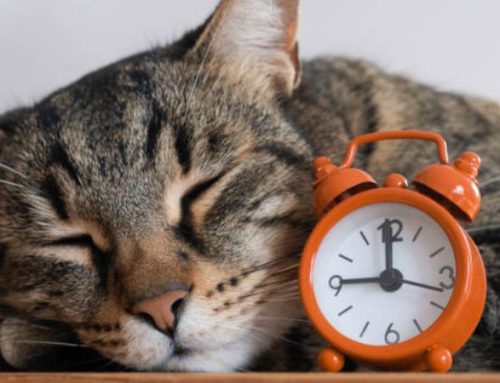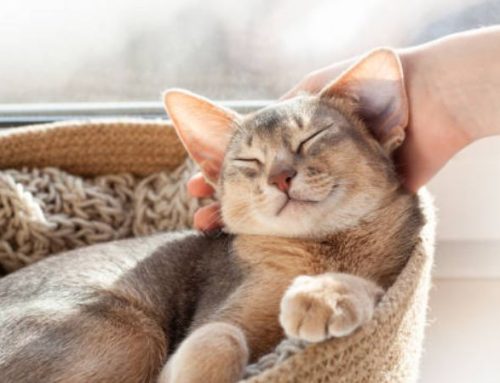It starts innocently enough a few curious nibbles in the yard but suddenly your dog is chowing down on grass like there’s no tomorrow, and moments later, they’re upchucking all over the kitchen floor. While this behavior might make you wince (and reach for a mop), it’s more common than you think and often perfectly normal.
But when does casual grazing turn into a red flag? Nexus Pets breaks down why dogs eat grass, what it means when they vomit afterward, and exactly what steps you should take to keep your furry friend safe and healthy.
1. What Should I Do Right Now?
If you catch your dog eating grass, it can be worrying especially if they start vomiting afterward. Acting quickly and methodically can help protect your dog and prevent complications.
Step 1: Secure the Environment
The first priority is to remove your dog from the grass source immediately. This prevents them from eating more and potentially irritating their stomach further.
- Offer small amounts of fresh water to keep them hydrated. Avoid letting your dog run or play excessively for at least 10–15 minutes, as physical activity could worsen stomach upset.
- Keep the area calm and quiet to reduce stress, which can aggravate nausea.

Step 2: Evaluate the Vomit and Behavior
Next, observe what your dog has vomited and monitor their behavior closely.
- Take note of the vomit’s appearance: is it mostly chewed grass and a small amount of fluid, or is it foamy? White foam can indicate an empty stomach, acid buildup, or more serious irritation.
- Check for other colors and textures—yellow or green bile may suggest the stomach is empty or upset, while traces of blood or undigested food could indicate a more serious problem.
- Observe your dog’s behavior: are they acting normally, alert, and comfortable, or are they lethargic, repeatedly attempting to vomit, or retching without producing anything? The latter are warning signs that require immediate attention.
Step 3: When to Call the Vet (Non-Negotiable Red Flags)
Some situations require urgent veterinary care, and delays can be dangerous:
- Repeated vomiting without producing anything—this can be a sign of bloat or gastrointestinal obstruction.
- Severe lethargy or weakness—a dog that cannot maintain normal posture or seems unusually tired may be seriously ill.
- Swollen, distended, or painful stomach—bloat (gastric torsion) is life-threatening and progresses rapidly.
- Persistent foamy or bile vomiting accompanied by distress or collapse—potential toxin ingestion or a serious medical condition.
If any of these red flags appear, call your veterinarian or an emergency clinic immediately. Describe your dog’s symptoms clearly, including the type and frequency of vomiting, behavior, and any potential toxin exposure. Prompt action can save your dog’s life.
2. Why Dogs Eat Grass: Debunking the Myths
Dogs eating grass can seem confusing, especially when it’s paired with vomiting. Yet this behavior is far more common than most pet owners realize—and in many cases, it’s perfectly normal. Understanding the myths and the realities behind grass-eating can help you know when it’s harmless and when to be cautious.
The Common Cause: It’s Just Normal Behavior (Pica and Boredom)
For the vast majority of dogs, eating grass is similar to scratching an itch—an instinctive or learned behavior that satisfies a minor urge rather than a medical need. Some dogs enjoy the taste and texture of grass, and others may have developed the habit as part of their daily routine, especially on walks or in the yard.
In some cases, dogs eat grass as a mild form of pica, which is the craving for non-food items. While extreme pica can indicate an underlying medical issue, mild, occasional grass-eating is usually harmless. Boredom also plays a significant role: understimulated dogs often chew, dig, or graze on grass simply to occupy themselves. This explains why some dogs are more likely to eat grass during walks, when routine and environment provide an opportunity for exploration and distraction.
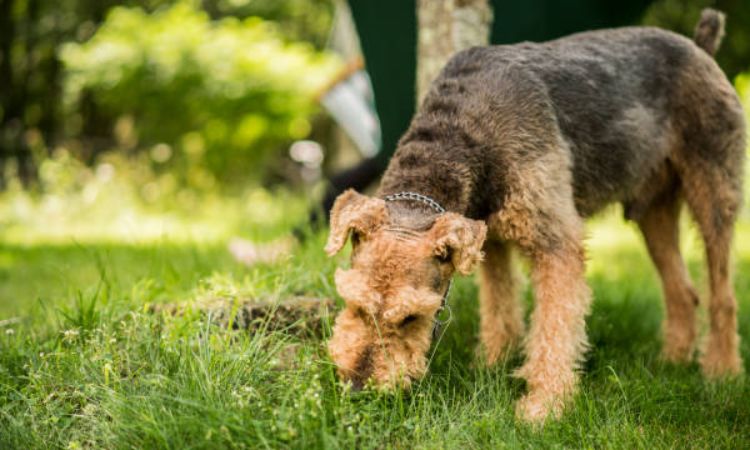
The Physiological Cause: Fiber and Upset Stomachs
Beyond behavioral reasons, some dogs eat grass due to physiological triggers.
The Fiber Hypothesis
Some researchers suggest that dogs may instinctively seek out roughage or fiber in their diet. In certain cases, dogs on low-fiber diets or those with gastrointestinal sensitivity may eat grass to supplement their digestion. While dogs cannot fully digest grass, it may pass through their system, potentially aiding bowel movements. A notable case study of a Miniature Poodle found that once the dog was given a high-fiber diet, the grass-eating behavior stopped entirely—highlighting a connection between fiber needs and grazing behavior.
The Vomiting Hypothesis
Many owners assume their dog eats grass to induce vomiting, but research shows this is uncommon. Most dogs who graze on grass do not vomit afterward, and when vomiting does occur, it is usually because the dog was already nauseous or experiencing an upset stomach. Grass is often incidental—a convenient vehicle for the vomiting reflex, not the cause of it.
While grass-eating can coincide with vomiting, it is rarely a deliberate attempt by the dog to make themselves sick. Instead, it’s often a response to preexisting gastrointestinal discomfort or dietary imbalance.
Grass-eating is a multifaceted behavior driven by both normal instincts and occasional physiological needs. Most commonly, dogs eat grass out of curiosity, boredom, or mild pica, especially during walks or when exploring new environments. Occasionally, they may graze due to fiber requirements or mild stomach upset but deliberately seeking vomiting is the exception, not the rule.
3. The Grass/Vomiting Cycle (The Alarming Symptoms)
The “Eating Grass Like Crazy” Phenomenon
If your dog suddenly starts eating grass obsessively, it can be alarming, but in most cases, it’s a relatively common behavior. Dogs may nibble occasionally out of curiosity, taste, or a mild dietary need, but frantic or compulsive grass eating can signal underlying issues. This behavior is often triggered by nausea, digestive discomfort, boredom, stress, or a combination of these factors.
Observing your dog’s body language and the intensity of the behavior is essential. Dogs that graze slowly and calmly are usually engaging in normal, instinctive behavior. In contrast, dogs that chomp rapidly, swallow large quantities, and appear tense may be reacting to gastrointestinal distress, hunger, or an unbalanced diet. Frequent or sudden-onset grass eating warrants careful monitoring and, in some cases, veterinary attention.
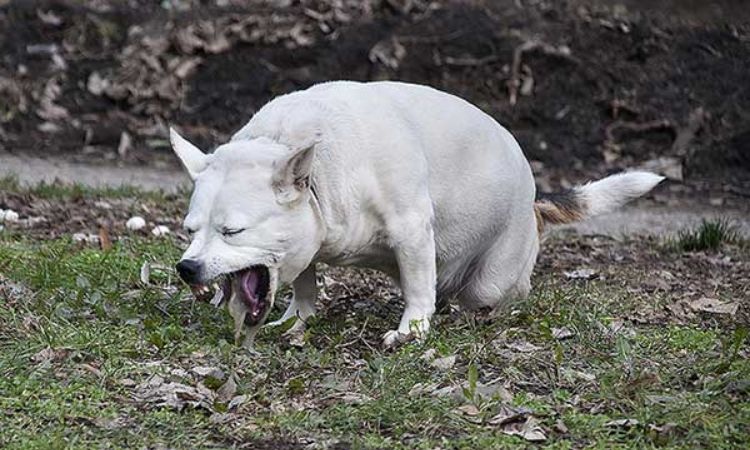
Why They Throw Up Foam
Many dog owners assume that eating grass directly causes vomiting, but research shows only about 25% of dogs vomit after grass consumption, and of those, most were not visibly ill beforehand. Dogs may eat grass instinctively when they feel nausea or gastrointestinal discomfort, and the act of chewing fibrous grass can sometimes trigger vomiting.
Foamy vomit often appears when the stomach is empty or filled with stomach acids, which mixes with saliva to create foam. This typically happens if a dog eats grass on an empty stomach or as an attempt to soothe upset digestion. Occasional vomiting of foam after eating grass is generally not a cause for concern, especially if your dog remains alert, hydrated, and otherwise healthy. However, persistent vomiting, especially when accompanied by lethargy, diarrhea, or loss of appetite, should prompt an immediate visit to the veterinarian.
Should I Let My Dog Eat Grass When Sick?
Veterinarians generally agree that occasional grass eating is harmless, and in some cases, it may help a dog relieve mild digestive upset. If your dog is sick but attempts to eat grass, allowing them to do so in moderation is usually safe. Grass may induce vomiting, which can help the dog eliminate irritants or ease nausea naturally.
However, there are important precautions to keep in mind:
- Avoid treated lawns or chemically sprayed areas: Pesticides, herbicides, or fertilizers can be toxic.
- Monitor frequency and amount: Excessive grass consumption or repeated vomiting indicates a possible underlying problem.
- Hydration is critical: Ensure your dog drinks enough water, especially if vomiting occurs.
- Seek veterinary advice for persistent symptoms: Frequent vomiting, lethargy, changes in stool, or weight loss requires professional evaluation to rule out infections, parasites, gastrointestinal issues, or nutritional deficiencies.
Occasional grass eating when a dog is mildly unwell is often a natural instinct. But obsessive behavior, repeated vomiting, or concurrent illness signs should never be ignored. A veterinarian can help determine whether dietary adjustments, behavioral interventions, or medical treatment is needed.
How to Stop Excessive Grass Eating
Excessive grass eating in dogs can become a frustrating habit, but with consistent management strategies, it can often be reduced or redirected. The goal is to address both the underlying causes and the environmental triggers, ensuring your dog remains healthy and happy.
Dietary Adjustments
Proper nutrition is one of the most effective ways to curb compulsive grass eating:
- Provide a balanced, high-quality diet: Ensure your dog’s food meets all their nutritional needs, including protein, essential fatty acids, vitamins, and minerals. Dogs often eat grass as a response to missing nutrients or roughage in their diet.
- Add fiber safely: Incorporate vet-approved sources of dietary fiber, such as cooked green beans, pureed pumpkin, or other suitable vegetables. Fiber can aid digestion, regulate bowel movements, and reduce the instinct to seek roughage from grass.
- Feed smaller, more frequent meals: Dogs that eat grass early in the morning or at odd times may be experiencing stomach discomfort from an empty stomach, sometimes leading to bile-induced vomiting. Dividing daily food into multiple small meals can stabilize digestion and reduce grass-eating triggered by hunger or nausea.
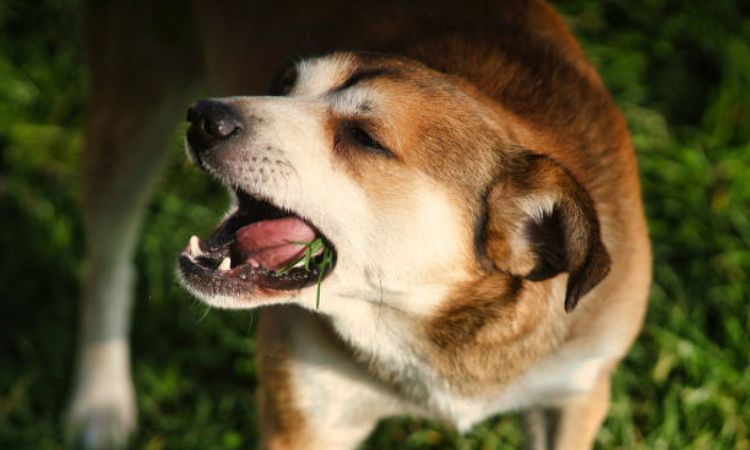
Behavioral and Environmental Changes
Addressing behavioral triggers is essential for long-term success:
- Increase physical exercise: Regular walks, play sessions, and active games help burn energy, reducing boredom-driven grass consumption. A physically tired dog is far less likely to graze compulsively.
- Enhance mental stimulation: Interactive toys, puzzle feeders, scent games, and training exercises keep your dog mentally engaged and satisfied. Mental stimulation can prevent the onset of repetitive or compulsive behaviors like grass eating.
- Use high-value distractions: When outdoors, bring along favorite toys or high-reward treats to redirect your dog’s attention away from grass. Consistently reinforcing positive behaviors helps them learn alternative ways to occupy themselves.
- Supervise outdoor time: Close observation while your dog is in the yard allows for timely redirection, especially in the early stages of breaking the habit.
Offering a Safe Alternative
Sometimes, dogs eat grass simply because they enjoy the texture and taste. Providing a safe, controlled alternative can satisfy this desire:
- Grow pet-safe indoor grass: Options like wheatgrass or oat grass can be grown in small pots indoors. Dogs can chew these safely without the risk of pesticides or parasites, providing a controlled outlet for their natural grazing instincts.
- Rotate or refresh the grass regularly: Keep it clean and free from contamination, ensuring it remains an attractive and safe substitute for outdoor grass.
By combining dietary improvements, behavioral enrichment, and safe alternatives, you can effectively manage excessive grass eating and prevent it from escalating into a compulsive behavior. Consistency, supervision, and patience are key, and always consult your veterinarian if the behavior persists despite these interventions.




